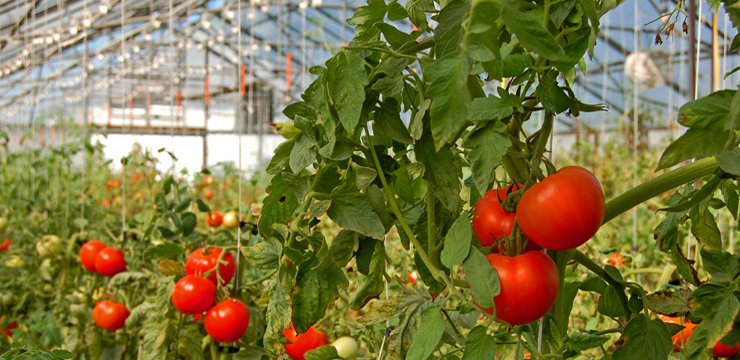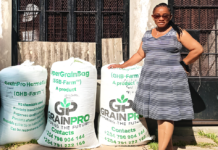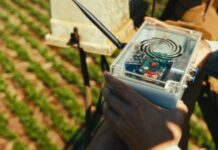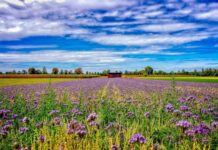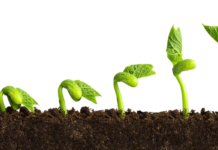Horticulture farming, which encompasses the cultivation of a wide variety of fruits, vegetables, and ornamental plants, utilizes diverse cultivation systems such as open field, soilless, organic, indoor, and protected cropping.
Increasing challenges like pests, diseases, and erratic weather—exacerbated by climate change—have made protected cropping a widely adopted practice globally.
Protected cropping includes greenhouses, glasshouses, shade houses, screen houses, and crop top structures. Among these, greenhouses stand out as one of the most intensive agricultural system focusing on the production of high-value products in what is called greenhouse horticulture.
This system offers controlled environmental conditions such as temperature and light, efficient use of water and fertilizers, and advanced technologies like hydroponics and automation. This enables higher yields, consistent production, and superior quality crops.
Greenhouse horticulture has become indispensable for feeding large urban populations in the face of dwindling water and chemical resources, making it a cornerstone of sustainable modern agriculture.
The evolution of greenhouse horticulture
According to a research article on History of Controlled Environment Horticulture: Greenhouses by Krishna Nemali published in 2022, the earliest record of producing crops using protected structures dates back to 14 to 37 century in Rome.
In the 17th and 18th centuries, structures called Orangeries were used in France to protect fruit trees from cold temperatures. These structures were tall masonry buildings with large glass windows on the southern side to allow sunlight.
Fast forward, in the 19th century, large glasshouse conservatories were built in Europe to grow exotic tropical plants collected from other countries.
These advances in structural design during the 18th and 19th centuries have had a significant impact on greenhouse designs developed during the 20th century and today.
Types and Designs of Greenhouses
Greenhouses are structures covered with transparent materials, designed to create controlled environments for year-round or seasonal crop production.
Greenhouse Designs
According to Nemali, a common greenhouse design features medium-to-tall, multispan, arch or gothic arch structures with gutter-connected polyethylene covers.
Key elements include permanent roof ventilation with insect nets, side ventilation on all four sides, and thermal or shade screens to reduce temperature and reflect sunlight.
These structures protect crops from wind and rain, making them ideal for floriculture and increasingly for crops like tomatoes and bell peppers.
Greenhouse Orientation and Design Considerations
Orientation: Greenhouses above 40°N latitude should run east-west to maximize low-angle light, while those below 40°N should run north-south for better sunlight distribution and minimal gutter shadows. Avoid overlapping shadows by spacing greenhouses appropriately, typically oriented east-west.
Wind Effects: Naturally ventilated greenhouses should align lengthwise perpendicular to prevailing summer winds. For fan-and-pad systems, airflow should follow the fan direction.
Size: Greenhouses should not exceed 50m x 50m to prevent excessive heat buildup. Evaporatively cooled greenhouses should be no longer than 60m.
Spacing: Maintain a 10-15m gap between naturally ventilated greenhouses to prevent exhaust airflow from entering adjacent units.
Height: Maximum height is 5m for 50m x 50m greenhouses, with proportional reductions for smaller structures. Side ventilation should be 2m wide, and roof ventilation 1m wide.
Types of Greenhouses
- Low-Cost Greenhouse
Constructed with local materials like bamboo and UV film, these greenhouses lack automated controls but use simple techniques, such as shading nets or plastic covers, to regulate temperature and humidity. They are cost-effective and suitable for cold climates, often used as rain shelters.
- Medium-Tech Greenhouse
Built with galvanized iron pipes, these structures feature manual or semi-automatic controls, including exhaust fans, evaporative cooling pads, and misting systems. While more advanced than low-cost models, maintaining a uniform environment can be challenging. They are suitable for dry and composite climates.
- Hi-Tech Greenhouse
Fully automated systems control all environmental parameters, ensuring optimal conditions with minimal human intervention. These greenhouses address the challenges of medium-tech models and offer precise environmental regulation.
Greenhouse Glazing Materials and their Evolution
The choice of glazing material significantly impacts a greenhouse’s environment, influencing light transmission, air temperature, and humidity. Initially, glass was the primary material, valued for its strength and light transmission.
Advances in the 20th century introduced float and prismatic glass, with tempered glass becoming popular for its durability and safety. Single-pane glass is common today, though double-pane options offer better insulation.
The discovery of polyethylene in 1933 revolutionized greenhouse design, offering a lightweight, affordable alternative to glass. Introduced in the 1950s, polyethylene films expanded greenhouse use globally, particularly in Asia, Africa, and the Middle East. Additives like UV stabilizers and IR blockers have improved its durability and efficiency, though it remains less durable than rigid materials.
Rigid plastics like polycarbonate and acrylic, developed in the 1990s, provide a middle ground between glass and plastic films. These materials offer better light distribution, reduced thermal transmission, and increased durability while blocking harmful UV rays. Polycarbonate advancements in the 1970s further enhanced its clarity, making it a popular modern choice for greenhouse glazing.
Future Trends in Greenhouse Technology
Greenhouses are expected to play a vital role in addressing global food supply challenges, especially as climate change drives a shift toward controlled environment agriculture. Rising temperatures may favor greenhouse farming in temperate regions, while efficient cooling technologies are likely to emerge for warmer areas.
Automation will become more advanced, with IoT-powered systems capable of monitoring plant growth, analyzing biochemistry, and adjusting environmental factors to optimize yield and quality without human intervention.
Sustainability will be a focus, with reduced reliance on fossil fuels, increased use of renewable energy, and technologies to enhance water-use efficiency as freshwater resources decline.
In response to consumer demand for safer food, greenhouses will likely adopt pesticide-free methods such as ultraviolet sterilization to manage pests and diseases.


